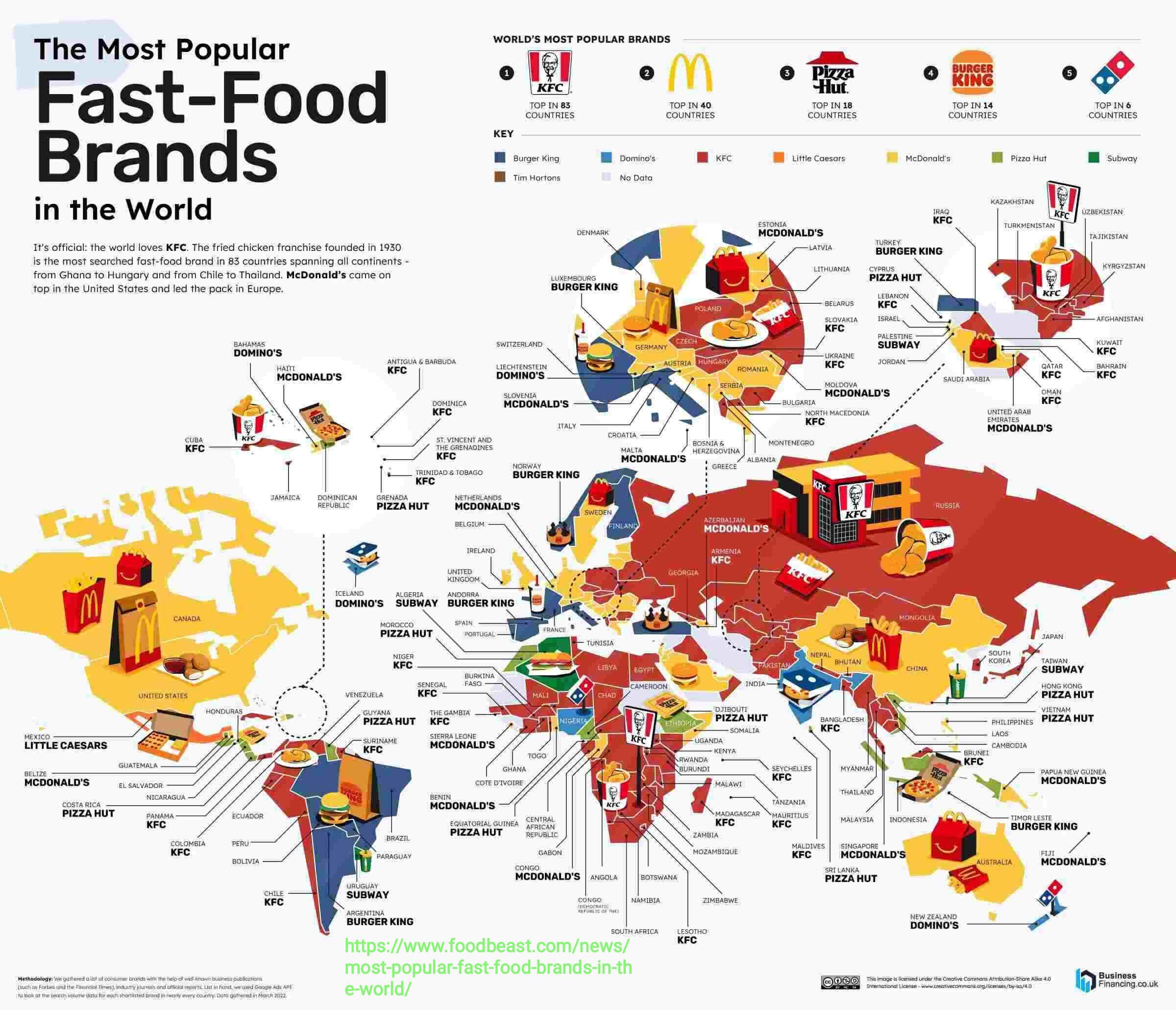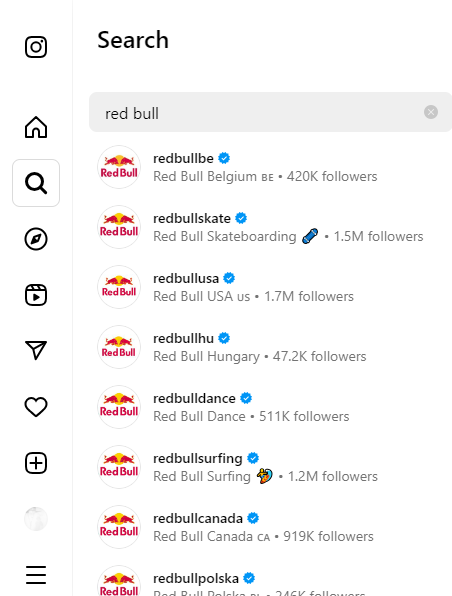Social networks offer brands a platform to instantly access millions of users. The internet and social are borderless, so new audiences may be discovering you without you realizing.
Social media marketing now enables you to intentionally connect with anyone from practically anywhere. This means expanding into new markets and maintaining your presence there requires marketing with a global perspective.
But international marketing isn’t like flipping a switch. For the best chance of success, you need a dedicated strategy.
In this guide, we explain why operating globally is so important, and how to use social media to achieve your international marketing goals.
What is international marketing?
International marketing, also known as global marketing, is the process of marketing your products or services outside of your home country.
Effective international marketing can increase customer bases, support revenue growth and diversify a brand’s overall market presence. The power of social media and the digital age has made international growth more accessible than ever.

What are the benefits of global marketing?
International marketing offers many benefits for growing businesses, including:
Increasing reach
International marketing helps you reach potential customers around the world. You can use it to raise global awareness of your brand, or target customers in specific countries.
Diversifying revenue streams
You can build new revenue streams for your company. This will then make your business less dependent on economic and buying trends in your home country.
Gaining specific insights
International marketing allows you to gain specific insights into the patterns and behaviors of your audience across different countries.
Use these insights to establish a feedback loop that reinforces your brand presence in developing markets, through targeted content development and product offerings.
International marketing challenges
Though international markets are more accessible than ever, global marketing still comes with its own set of nuances. These are some of the main challenges, and how you can overcome them.
Understanding cultural differences
People around the world interpret things differently. Even something? as simple as color will have different connotations in certain places.
Effective cross-cultural marketing means always being aware of these cultural differences, and avoiding cultural appropriation. This is only possible by working with people with lived experience in different societies, cultures or backgrounds.
Managing logistics
Marketing efforts are possible online, but you’ll need to establish a logistics system for shipping physical products abroad.
Logistics will depend on what you’re selling. Be aware of things like shipping costs, delivery times or online delivery methods before you start marketing in new regions.
Navigating regulations
Countries have different legal systems, taxation laws, tariffs and other rules that govern businesses.
For example, the EU’s GDPR regulation has prompted international marketers to rethink how they collect and use EU customer data.
Make sure you’re aware and compliant with all regulations in your chosen region before you start pursuing sales.
Currency exchanges
Selling abroad inevitably requires currency exchanges.
You need a payment system that allows you to receive foreign currencies and exchange these payments into your home currency while still making a profit.
Different competitive landscapes
New markets will likely also introduce new competitors.
Always conduct competitive analysis before you expand into a new region so that you’re prepared for its unique competitive landscape.
Tips for making an international marketing strategy
Use the following tips to outline your international marketing strategy and increase your chances of success.
Target regions with low barriers to entry
Even though brands can connect with the world through digital means, it’s worth focusing your marketing on regions where you can easily operate.
To help narrow down your options, begin by exploring territories that ?may have fewer obstacles. When you’re choosing where to target, consider:
- Language barriers. Consider countries that speak the same language as your marketing team
- Geographic proximity. The closer a country is, the easier it’ll be to sort out logistics.
- Competition. Assess how competitive the country is to determine how easily you can build a presence.
- Similar target demographics. Aim for countries with audiences similar to your current customer base. This way, you won’t need to modify your marketing too much at first. much at first.
- Financial situation. Consider the economy of the country, and whether it represents a clear financial opportunity for your business.
- Gaps in the market. Conducting a social media competitive analysis might reveal markets that have unmet needs, which means more demand for your company.
Consider expansion costs and resources
Even though social media has made global marketing easier, you still need to consider the cost of expansion.
Here are some typical costs to consider:
- Shipping
- Legal (think: registering your business in a new location, licensing, contracts, etc.)
- Foreign taxes
- Translation services (for international social media accounts, multilingual SEO, etc.)
- New employees (either digital or in-person, including consultants and contractors)
- Travel
But the actual dollar amount depends on your industry. It’s possible for a small retail business to ship internationally or sell to specific countries online without making a significant investment.
Some companies may have an easier time entering international markets than others, particularly those that don’t have to worry about physical products, like SaaS marketing.
Develop a localization strategy
Localization is the process of adapting to the needs of another audience or culture.
If you rely on website sales, consider localizing your website for international customers. Other types of localization include regional social content or tweaking your messaging to resonate with a broader audience.
Sprout’s Spanish localization strategy is a great example. Sprout Social’s Spanish site boasts similar creatives and messaging to our standard homepage, but with region-specific language.

You should also localize what you’re selling so your products or services are relevant to your foreign customers.
This might involve creating a one-off promotional product in a single country. Or, it could mean re-designing your service to better meet the needs of a different market.
The more you expand, the more you’ll need to embed a localization strategy into your company.
Leverage AI and automation
Use artificial intelligence (AI) to analyze multilingual sentiment data. Looking at comments across multiple languages reveals specific insights into the opinions and needs of customers across regions.
If you’re managing multiple accounts, make use of automated tools to streamline processes. For example, Sprout’s Optimal Send Times uses optimization algorithms to identify the best times to post across different profiles and platforms. Our research on the best times to post on social media shows engagement rates are highly dependent on timing. Tools like this can simplify your account management while also boosting the performance of your global marketing plan.
Develop a reporting infrastructure for your international marketing efforts
Before you start marketing globally, determine how you’ll track and report on your success.
A reporting infrastructure can help you define your success metrics and expectations. You can then deliver a clear data story to your marketing team and other stakeholders.
With Sprout’s My Reports capability, create custom reports filtered to the needs of region-specific teams as well as your leadership.
By reporting across individual regions, you can track how effectively your global marketing efforts are performing on a more granular level. Use these insights to determine which regions are overperforming, or require more attention. This data can then inform where and how to further expand your brand in the future.
Using social media for international marketing
Social media is a great testing ground for your international marketing strategy. We’ve outlined some key considerations for global success on socials.
Consider regional accounts
First, decide if you need to create separate accounts for certain regions. This is a popular strategy for larger brands, like Red Bull.
Separate accounts hyper-focus your content on the needs of your audience in certain countries.
But if you’re just starting to market globally or have a small marketing team, it might be better to optimize your main account for a larger audience.

Use multiple social networks
Create a presence on the networks your audiences use most. Leverage cross-posting and scheduling to make managing multiple accounts simpler.
Cross-posting can also uncover platform preferences for different regions. For instance, you might find that customers in your home country primarily use Instagram, whereas those in a new market prefer TikTok. Use this insight to create regional accounts or content on those preferred platforms.
Create culturally relevant campaigns
Successful international marketing depends on careful consideration of different cultures.
Familiarize yourself with the celebrations, traditions and cultures of your targeted region. It’s also worth changing your content’s language and terminology to cater to people in those regions—for example, some audiences are put off by “Americanized” spelling.

The more you know about your customers and their culture, the more opportunities you’ll have to connect with them through your social campaigns.
3 International marketing examples to inspire your approach
The three examples below show how brands leverage digital strategies to uniquely market to multiple audiences at once.
Example 1: IKEA
IKEA balances standardization and localization in its global marketing strategy.
The 473 IKEA stores worldwide specialize in the brand’s assemble-it-yourself furniture and minimalist design. But they create region-specific products and cafe items for different markets, and even make tweaks to existing products.
IKEA also has multiple region-specific accounts across Instagram, X (formerly known as Twitter) and other platforms.
Here’s a recent post on their Hong Kong Instagram page, promoting a new durian ice cream flavor in their cafe.

The company has been able to succeed in 63 different markets because it can combine a recognizable IKEA brand with local products and marketing.
Example 2: Nintendo
As one of the three biggest video game companies, Nintendo markets its consoles and games to a worldwide audience.
Their in-house localization team, The Treehouse, is responsible for localizing Nintendo’s games for different markets. This level of localization helps boost Nintendo’s family-friendly, inclusive brand image.
They also support their localization strategy with social media accounts that have content for key regions. They operate accounts across the US, Japan, UK, Belgium, The Netherlands, Brazil and many more.

Example 3: Spotify
Spotify is available in 195 countries, and a big part of its service involves providing music recommendations.
They use advanced personalization tools and a strict localization strategy. This means playlists, descriptions and other details change based on the user’s country. Spotify’s ads, which are served to every free user, are also region-specific.

Spotify also invests in region-specific off-platform advertising. Their 2022 ads in India were shown during that year’s Indian Premier League season. All the advertisements were recorded in Hindi. Spotify combined the local language and culturally-specific scenarios with their tongue-in-cheek, music-focused brand. This resulted in 15 unique videos that spoke directly to their Hindi-speaking markets.
Go global with an international marketing strategy
With a refined strategy rooted in social media, brands of all sizes can expand their reach across the globe.
Read through Sprout’s case study with Minor Hotels to learn how they used social media tools and regional advertising to build an online presence across 55 countries.